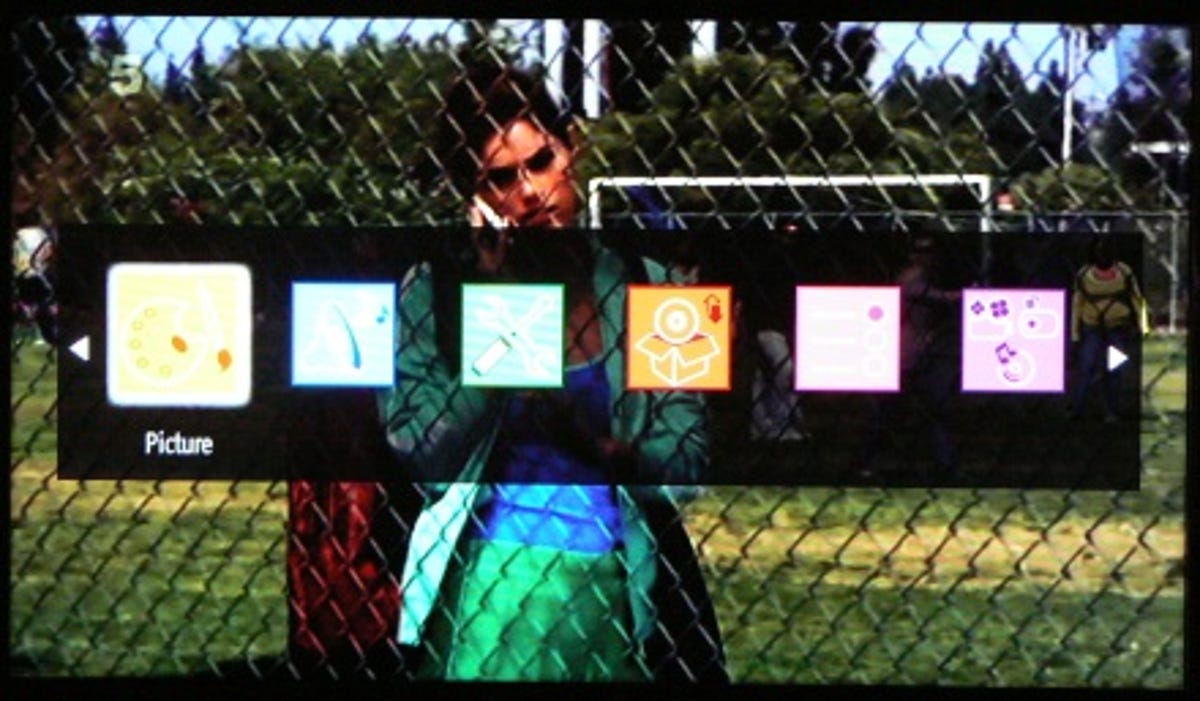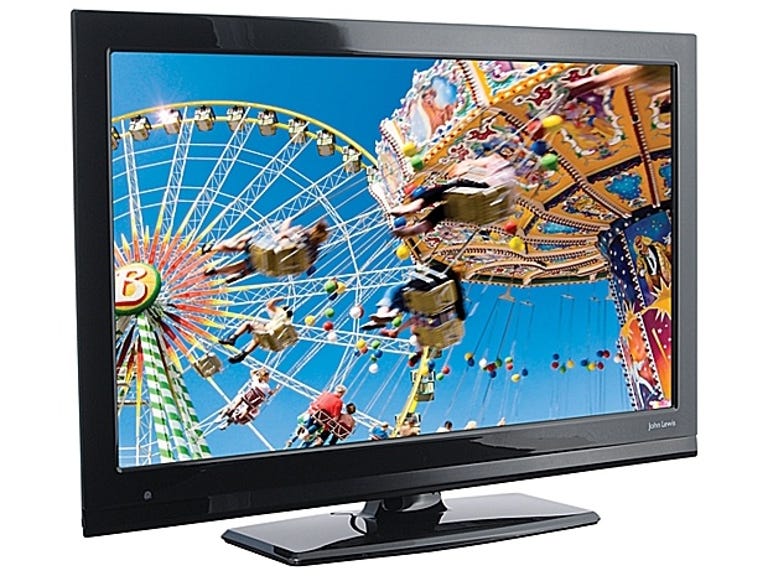 Why You Can Trust CNET
Why You Can Trust CNET John Lewis JL26LED review: John Lewis JL26LED
Don’t let the lack of Full HD resolution and Freeview HD tuner put you off, as the 26-inch JL26LED from John Lewis produces punchy pictures.
John Lewis is a popular place for many people to buy their TV because it offers price matching and a free extended five-year warranty. As well as offering other manufacturers' TVs for sale, it also has a number of own-brand sets.
The Good
The Bad
The Bottom Line
Here I'm taking a look at the 26-inch JL26LED, which uses LED backlighting and has a built-in digital media player. You can buy the set from the John Lewis website for £300.
User interface and EPG
The menus on own-brand TVs rarely look as slick or as polished as those of big name manufacturers. Sadly that's the case here. However, the interface on the JL26LED is far from the worst I've seen. Pressing the menu button on the remote calls up a transparent grey bar in the middle of the screen with a series of large icons inset into it. These include shortcuts to the picture, sound and settings screens, as well as icons for the tuning menu, channel list editor and the media browser.

The TV's picture controls are relatively basic. There are a number of presets you can choose from, including pretty good Natural and Cinema modes. As you would expect, these can be tweaked if needed using the standard contrast, brightness, sharpness and colour controls. The main picture menu also allows you to change the backlight setting, although this strangely seemed to have very little effect on the picture.
There's a noise reduction control, which you can move between low, medium and high settings. Entering the advanced picture settings menu allows you to change the colour temperature between warm, cool and natural options, as well as use the colour shift control to move the balance between the red and green hues.
Pop into the sound menu and you'll find that it includes a 5-band graphic equaliser, as well as a bass booster and automatic volume control. The latter helps to even-out changes in volume levels when TV shows cut to advert breaks, or when you're changing channels.
The set's electronic programme guide (EPG) is pretty basic, but it gets the job done. It lacks a video thumbnail window and it doesn't even keep the audio running from the channel you were watching when you call it up. It does, thankfully, use a normal landscape layout with programmes shown as rectangular boxes. The box length indicates how long a show is on for.
The guide looks quite dark and sombre as it has an all-black background with white boxes framing each of the programmes. Some colour wouldn't have gone amiss here. Nevertheless, I do like the way a grey bar runs through the currently showing programme to display how much of it has already played and how much remains. Navigation is speedy using the snappy remote and you can quickly filter by genre or channel type.
Design and connections
The glossy black finish used on this set doesn't exactly make it stand out from the crowd. That said, this is actually not a bad-looking TV as there is some nice detailing on the front, including a small angular lip at the bottom of the bezel and a silver bead perched just above the stand. The TV uses LED backlighting, so it's reasonably slender, with the panel measuring a rather slim 27mm deep.
The remote is a cut above those that you usually get with own-brand models. It's long and thin, with a glossy finish on the top that contrasts nicely with the black, rubberised buttons. The buttons feel responsive, especially the clicky central control pad, and it's also comfortable to hold. The only niggle is the EPG button, which is on the small side and is placed towards the top of the remote where it's a tad awkward to reach when you're holding the remote in a normal position.
The TV isn't exactly overflowing with connection options, but that's perhaps not unexpected on a set of this size. The panel on the rear houses two HDMI ports along with a full-sized Scart connector. A digital audio Coaxial output allows you to feed sound from the on-board Freeview tuner to an external amp. There's also a standard VGA port in case you want to hook the set up to a computer to use it as a monitor. Meanwhile, a panel on the left-hand edge is home to the headphone socket, as well as a mini-jack AV input. Here, you'll also find the CAM slot along with the USB port.
Digital media
The USB port is present because this model can playback a range of digital media files. When you plug a memory key or hard drive into it, the media player automatically starts up. Alternatively, you can start it manually at any time by entering the main menu and selecting the media browser option.
The interface for the media player is rudimentary. There are large icons across the screen for videos, photos and music tracks as well as a settings option. Selecting any of the media types takes you to a basic file browser-style window, where you can choose your song, movie or image. File format support is limited to JPEG pictures and MP3 music files. On the video side, it'll play DivX and Xvid files, but only those with stereo soundtracks as it can't handle AC3 or DTS audio. Also, it doesn't work with MKV files.
Playback quality is generally pretty good, and the fast-forward and rewind controls work well -- something that's not always the case on these types of built-in media players.
Unlike a lot of budget sets, this one doesn't allow you to record TV shows to drives connected to the USB port, which is a shame. Also, as this model doesn't have Ethernet or Wi-Fi, it can't stream files across a network from a PC and doesn't support any Smart TV features.
Audio quality
Compact TVs usually tend to suffer when it comes to audio, simply because the smaller chassis means there's only room to fit in tinchy speakers. The JL26LED performs better than most in this area. Its speakers manage to sound crisp and bright -- something that helps voices in TV shows and movies to cut through the audio mix nicely.
It's not all plain sailing as the speakers do lack bass, so music channels like 4Music on Freeview tend to sound flat and lifeless. You can help things along by pushing up the bass levels using the graphic equaliser found in the TV's audio menu. However, it's best to leave the Bass Effect that's also found in the audio menu alone, as it just muddies the overall sound.
Picture quality
Unlike some of the other smaller TVs I've seen recently, this one isn't a Full HD set. Instead, it uses a panel with a resolution of 1,280x720 pixels. Given the small size of the screen, this isn't a major issue as pictures still tend to look very sharp -- even HD movies fed via a Blu-ray player. Sadly, the TV only has a Freeview tuner, so you don't get access to services like BBC HD and Channel 4 HD.
Often these kinds of budget sets suffer from wayward colours, especially when it comes to skin tones. Thankfully, the JL26LED manages to avoid these pitfalls. Using the Natural and Cinema presets, colours actually look warm and natural and skin tones are sympathetically dealt. It avoids the overly reddish and plasticky look that lesser models suffer from.
The LED backlighting doesn't just help to make the set slimmer, it also helps deliver relatively deep black levels as well as making pictures look quite bright and vibrant.
It doesn't get full marks though, because the set's backlighting isn't quite as consistent as it could be. For example, during darker scenes you can see slight pooling of light around the corners of the display. Also, some motion blur and judder is evident with slow and high-speed camera pans, such as with footy matches or action movies watched via a Blu-ray player.
Almost all the smaller TVs I see suffer from similar problems. Overall, I think that the JL26LED's images are actually a cut above the norm as they manage to look bright and punchy, without being over-saturated in the colour department.
Conclusion
This is a good, no-nonsense, smaller budget TV from John Lewis. It may be missing a Freeview HD tuner and a Full HD panel, but its audio and general picture performance is a cut above what you usually get from own-brand models. If you're looking for a modestly priced second TV for a kitchen or bedroom, it's a good bet.


